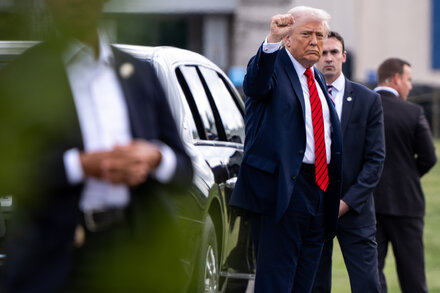The H-1B visa program, a cornerstone of the U.S. strategy to attract highly skilled foreign workers, consistently finds itself at the center of contentious debates regarding its efficacy, fairness, and economic impact. Amid ongoing discussions about potential reforms, the notion of imposing a significantly higher fee, such as $100,000 per visa, has emerged as a hypothetical measure in some policy discussions. However, experts and advocates widely argue that such a steep financial barrier would likely fail to address the underlying structural challenges plaguing the program and could introduce new complications.
The H-1B Visa Program: Purpose and Perceived Flaws
Established to allow U.S. employers to temporarily employ foreign workers in specialty occupations that generally require a bachelor’s degree or higher in a specific field, the H-1B visa is crucial for sectors like technology, healthcare, and engineering. The program operates under an annual cap, currently set at 85,000 new visas, which includes 20,000 for those with U.S. master’s degrees or higher. Demand consistently far outstrips supply, leading to an annual lottery system that leaves many qualified candidates and companies in limbo.
Critics point to several systemic issues within the H-1B framework. Concerns include allegations of wage depression in certain sectors, the program’s potential misuse by “outsourcing firms” that allegedly bring in workers to replace American employees at lower costs, and the lottery system’s inability to prioritize the most skilled or highest-paid applicants. Proponents, conversely, highlight the visa’s role in filling critical skill gaps, fostering innovation, and maintaining the U.S. competitive edge in a global economy.
The Argument Against a $100,000 Fee
A hypothetical $100,000 fee, while potentially generating substantial revenue for the U.S. government or ostensibly limiting competition, is broadly seen by policy analysts and industry leaders as a blunt instrument that would fail to address the core problems of the H-1B program.
One primary concern is the disproportionate impact such a fee would have on smaller businesses and startups. These entities often rely on H-1B visas to attract niche talent crucial for their growth but may lack the financial resources of larger corporations. A prohibitive fee could effectively price them out of the global talent market, stifling innovation and job creation within dynamic, emerging sectors.
“An exorbitant fee would not only make it impossible for many startups and small businesses to compete for global talent, but it also wouldn’t solve the fundamental issues of how we select H-1B workers or ensure fair wages,” explained a policy analyst specializing in immigration economics. “It would simply erect another barrier, potentially pushing highly skilled individuals to other nations.”
Furthermore, a high fee does not inherently solve the issues of wage depression or the prioritization of skilled workers. Companies willing to pay the fee might still seek to hire workers at the lowest permissible wages, or the fee could simply be passed on to the foreign worker, creating an additional burden. The lottery system, if it remains in place, would still fail to differentiate between applicants based on their qualifications or the economic value they bring, regardless of the accompanying fee.
Alternative Approaches to H-1B Reform
Instead of relying on a high fee, many experts advocate for more nuanced reforms that target the program’s actual structural deficiencies. These include:
- Wage-Based Allocation: Prioritizing visas for workers who command higher salaries, which could indicate higher skill levels and reduce the incentive for wage depression.
- Prioritizing Advanced Degrees: Allocating more visas to individuals with advanced U.S. degrees, particularly in STEM fields.
- Increased Enforcement: Strengthening mechanisms to prevent abuse by companies and ensure compliance with labor laws.
- Expanding the Cap: Adjusting the annual cap to reflect economic demand and the need for skilled labor, particularly during periods of low unemployment.
- Sector-Specific Visas: Developing specialized visa categories for critical industries facing acute talent shortages.
The consensus among many stakeholders is that true reform requires a comprehensive approach that balances the needs of U.S. employers, the protection of American workers, and the desire to attract and retain top global talent. A substantial fee increase, while possibly generating revenue, is largely viewed as a simplistic solution that would fail to address the complex, multifaceted challenges inherent in the H-1B visa program.
Source: Read the original article here.





